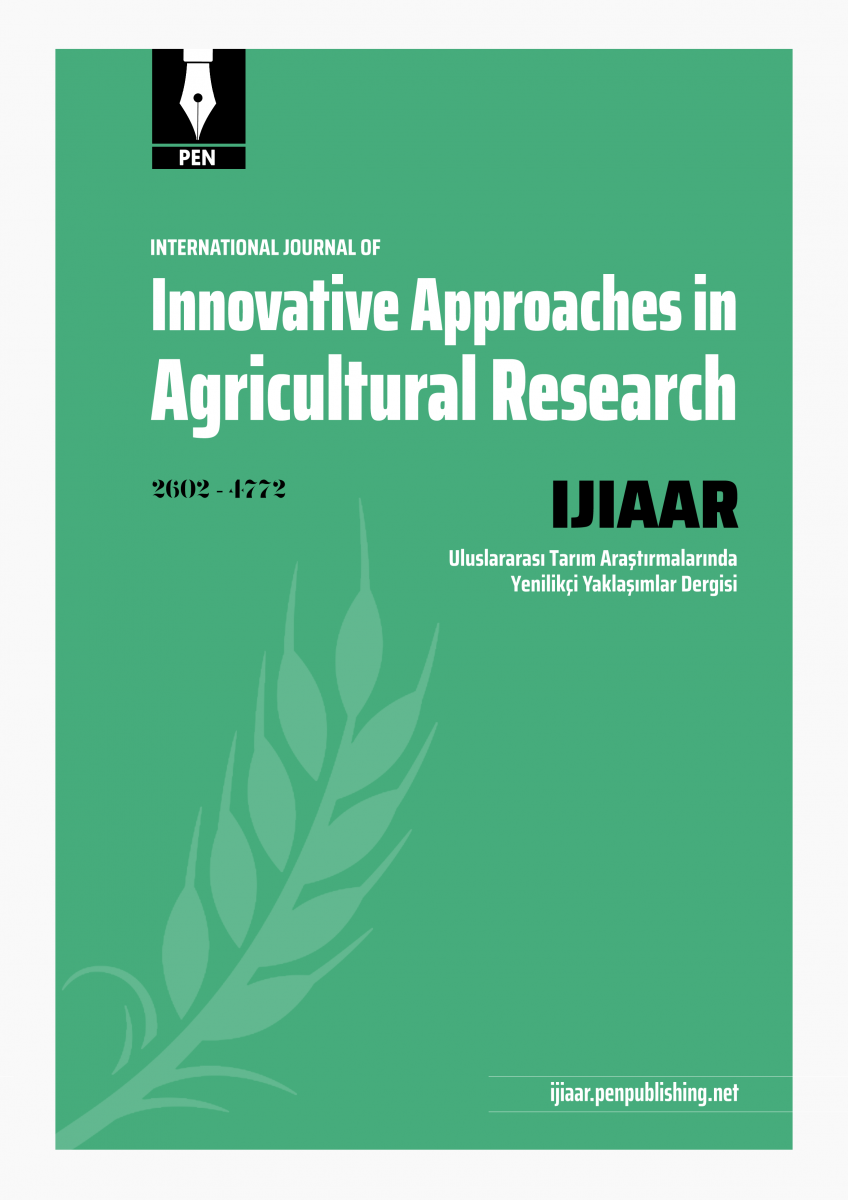- Aydın, A. (2022). Türkiyue’de Buğday Üretim Sektörünün Yapısı ve ARIMA Modeli İle Üretim Tahmini. İşletme Ekonomisi ve Yönetim Araştırmaları Dergisi, 1(1), 18. [Google Scholar]
- Badem, M. (2018). Tekirdağ ili Marmara Ereğlisi İlçesi Yeniçiftlik Mahallesi’nde Bir Tarım İşletmesinde Buğday Üretim Maliyetinin Hesaplanması. Tekirdağ. [Google Scholar]
- Badem, M. (2019). Canola and Sunflower Cost and Profitability Analysis for 2017 -2018. [Google Scholar]
- Badem, M. ve Hurma, H. (2021). Temel Stratejik Ürün Olan Buğdayda Destekleme Politikalarına Genel Bir Bakış. Trakya Üniversitesi Mühendislik Bilimleri Dergisi, 22(1), 21–30. http://dergipark.gov.tr/tujes adresinden erişildi. [Google Scholar]
- Bal, G. (2019). Türkiye’de Tarım Desteklerinin Bölgesel Dağılımı 2002-2018. Hacettepe Üniversitesi, Ankara. [Google Scholar]
- Başdemir, Ş. (2021). 2001-2020 Döneminde Türkiye’de Tarım Alanları ve Bitkisel Ürünlere Yönelik Tarımsal Destekleme Ödemelerinin Seyri ve Değerlendirilmesi. Marmara Üniversitesi Sosyal Bilimler Enstitüsü, İstanbul. [Google Scholar]
- Bayramoğlu, Z., Göktolga, Z. G. ve Gündüz, O. (2002). Tokat İli Zile İlçesisinde Yetiştirilen Bazı Önemli Tarla Ürünlerinde Fiziki Üretim Giderleri ve Maliyet Analizleri. Tarım Ekonomisi Dergisi, 11(2), 101–109. [Google Scholar]
- Demirdöğen, A. (2019). Türkiye’de Tarımsal Destekler, 319–329. [Google Scholar]
- Dogruel, F., Dogruel, A. S. ve Yeldan, E. (2003). Macroeconomics of Turkey’s agricultural reforms: an intertemporal computable general equilibrium analysis. Journal of Policy Modeling, 25(6–7), 617–637. doi:10.1016/S0161-8938(03)00056-5 [Google Scholar] [Crossref]
- Düğmeci, Y. H. ve Çelik, Y. (2020). Konya İli Çumra İlçesinde Yağlık Ayçiçeği Üretim Maliyetinin Tespiti Üzerine Bir Araştırma. Türk Doğa Bilimleri Dergisi. [Google Scholar]
- Durum Tahmin Ayçiçeği 2021. (2021). Ankara. [Google Scholar]
- Eraktan, G. (2001). Tarım Politikasının Temelleri ve Türkiye’de Tarımsal Destekleme Politikası. (Can, Ed.) (Uzel Yayın.). Ankara: Uzel Yayınları. [Google Scholar]
- Erbaş, N. (2020). Yozgat İli Tarım İşletmelerinde Kışlık Buğday (Triticum aestivum L.) Üretiminin Maliyet Analizi. Iğdır Üniversitesi Fen Bilimleri Enstitüsü Dergisi, 10, 1318–1328. [Google Scholar]
- Karadaş, K. (2016). Ağrı İli Tarım İşletmelerinde Buğday Üretim Maliyetinin Hesaplanması. Alınteri, 33–41. https://dergipark.org.tr/tr/download/article-file/267329 adresinden erişildi. [Google Scholar]
- Kıymaz, T. (2019). Tarımsal Desteklerin Etkileri Çerçevesinde Bitkisel Üretim İçin Politika Alternatifleri. Ekonomik Yaklaşım Derneği, 32(119), 103–141. https://www.researchgate.net/publication/351979288_Tarimsal_Desteklerin_Etkileri_Cercevesinde_Bitkisel_Uretim_Icin_Politika_Alternatifleri adresinden erişildi. [Google Scholar]
- Konyalı, S. ve Gaytancıoğlu, O. (2007). Türkiye’de Buğdayda Uygulanan Tarım Politikaları ve Trakya Bölgesi Üreticilerinin Sorunları. Tekirdağ Ziraaat Fakültesi Dergisi, 4(3). [Google Scholar]
- Polat, K. (2021). 2020 Yılı Hububat Sektör Raporu. Ankara. https://www.tmo.gov.tr/Upload/Document/sektorraporlari/hububat2020.pdf adresinden erişildi. [Google Scholar]
- Semerci, A. (2019). Yağlık Ayçiçeği Üretiminin Ekonomik Analizi: Kırklareli İli Örneği. Türk Tarım ve Doğa Bilimleri Dergisi, 6(4), 616–623. doi:10.30910/turkjans.633530 [Google Scholar] [Crossref]
- T.C. TOHB 2020. (2020). 9 Temmuz 2021 tarihinde https://www.tarimorman.gov.tr/SGB/Belgeler/Bakanlık_Faaliyet_Raporları/TARIM VE ORMAN BAKANLIĞI 2020 FAALİYET RAPORU v.pdf adresinden erişildi. [Google Scholar]
- TÜİK. (2021). Türkiye İstatistik Kurumu. 14 Temmuz 2021 tarihinde https://www.tuik.gov.tr/ adresinden erişildi. [Google Scholar]
|

